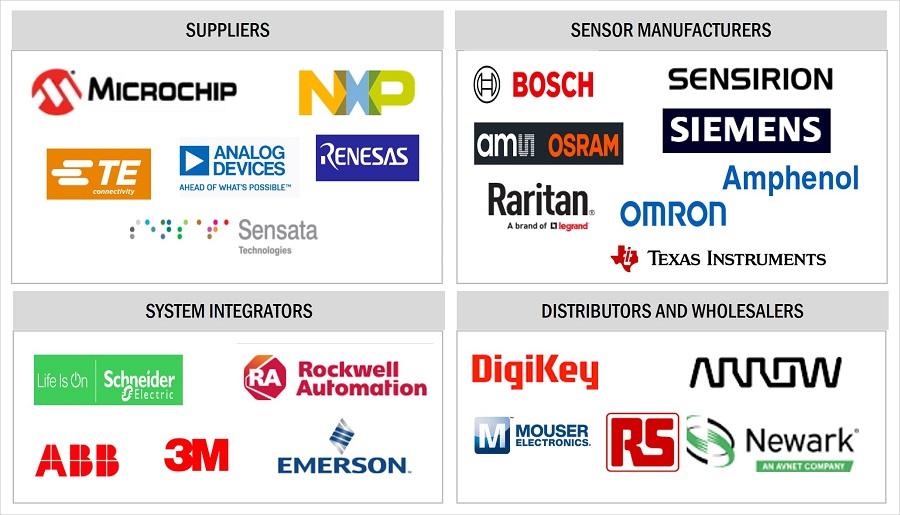Environmental Sensor Market Set for Rapid Growth, Expected to Reach USD 3.0 Billion by 2028

The environmental sensor market size was valued at USD 1.8 billion in 2023 and is estimated to reach USD 3.0 billion by 2028, registering a CAGR of 11.0% during the forecast period.
The growth of the environmental sensor market is driven by implementation of stringent regulations to reduce air pollution, health and safety concerns, and increased deployment of air quality monitoring stations.
Environmental sensors are being increasingly adopted in various products such as consumer electronics, HVAC, and air purifiers. Consumer electronics include smartphones, tablets, and wearable devices, and the growing number of integrated environmental sensors in these devices is expected to drive the growth of the environmental sensor market.
Download Free PDF Guide:
https://www.marketsandmarkets.com/pdfdownloadNew.asp?id=36880440
Temperature sensor segment to hold larger market share during the forecast period.
The temperature sensor segment is expected to hold high market share during the forecast period. The high market share is credited to the increasing awareness of climate change and its impact on various sectors. Industries, enterprises, commercial, healthcare, and even households are recognizing the significance of accurate temperature monitoring to optimize processes and enhance productivity. With climate variability affecting businesses and everyday activities, precise temperature sensors have become critical. Moreover, the rise in smart homes and smart cities initiatives has led to an upsurge in the adoption of temperature sensors for efficient energy management and ensuring the comfort of inhabitants. Furthermore, technological advancements have made these sensors more affordable, compact, and reliable, making them accessible to a broader range of applications. As a result, the temperature sensor segment is poised to dominate the market, securing a significant and growing market share in the foreseeable future.
Smart home segment to exhibit highest growth in terms of environmental sensor market during the forecast period
The smart home automation sector in the environmental sensor market is set to experience rapid growth in the coming years due to various driving factors. Increasing awareness of environmental conservation and the demand for energy-efficient solutions are propelling this expansion. Environmental sensors cater to the growing eco-conscious consumer base by monitoring and optimizing energy usage. The advent of the Internet of Things (IoT) and the widespread use of connected devices are turning conventional homes into smart, interconnected spaces. Environmental sensors, facilitating real-time data collection and analysis, enhance the efficiency of systems like heating, ventilation, air conditioning, lighting, and irrigation. This data-driven approach elevates user comfort and leads to substantial energy savings, making it an appealing choice for homeowners. Furthermore, stringent government regulations and initiatives promoting sustainable living encourage incorporating environmental sensors in residential spaces. With advancing technology making sensor solutions more affordable and sophisticated, the smart home automation segment within the environmental sensor market is poised for robust growth.
Commercial segment account for the largest share of the environmental sensor market for during the forecast period
The commercial vertical is expected to secure a high market share during the forecast period. Heightened awareness of climate change and environmental sustainability is driving businesses worldwide to adopt eco-friendly practices. Environmental sensors, pivotal in enabling companies to monitor and reduce their carbon footprint, are integral to these initiatives. Moreover, stringent regulations mandating environmental compliance and energy efficiency are pushing businesses to invest in cutting-edge sensor technologies. These sensors enhance energy management and ensure optimal use of resources, leading to significant cost savings in the long run.
Environmental sensor market in Asia Pacific estimated to grow at the fastest rate during the forecast period
Asia Pacific region in the environmental sensor market is expected to grow at the fastest rate during the forecast period. The swift urbanization and industrialization are likely to have resulted in increased pollution levels and environmental concerns. Governments across Asia Pacific countries are implementing stringent regulations and initiatives to curb pollution, such as the National Clean Air Programme (NCAP) by the Government of India, the Special Measures Act on Fine Dust Reduction, and the Air Quality Management Act by the South Korea government, the Act on Promotion of Measures to Cope with Global Warming in Japan, etc. escalating the demand for advanced environmental sensors.
- Art
- Causes
- Crafts
- Dance
- Drinks
- Film
- Fitness
- Food
- Игры
- Gardening
- Health
- Главная
- Literature
- Music
- Networking
- Другое
- Party
- Religion
- Shopping
- Sports
- Theater
- Wellness
- IT, Cloud, Software and Technology


